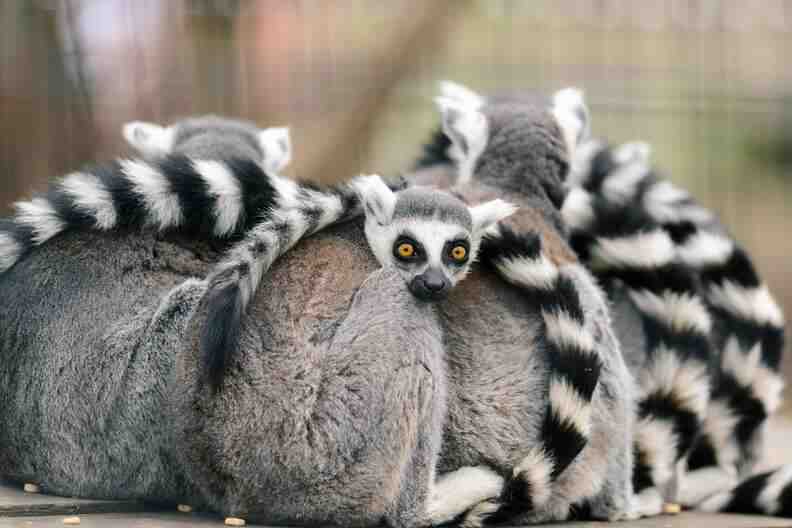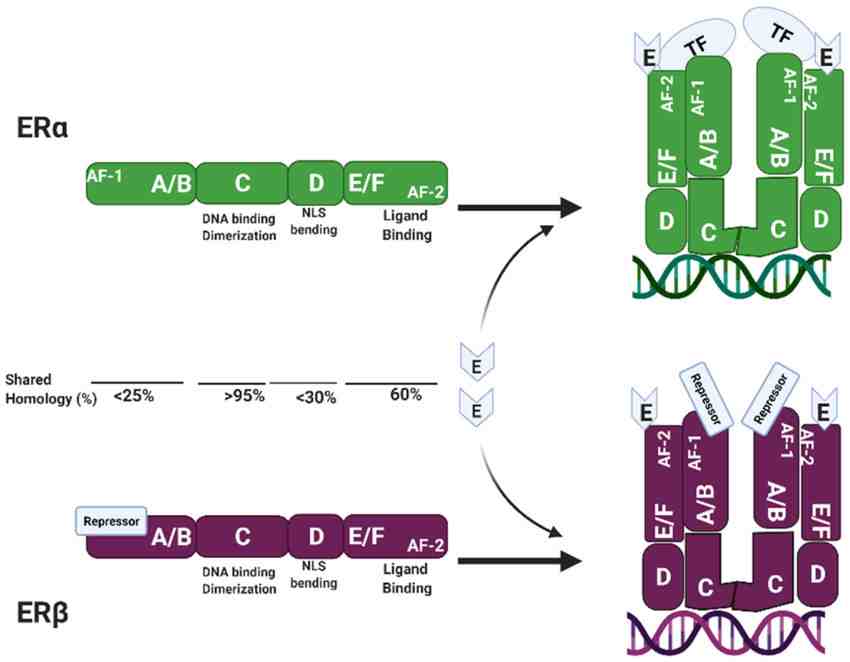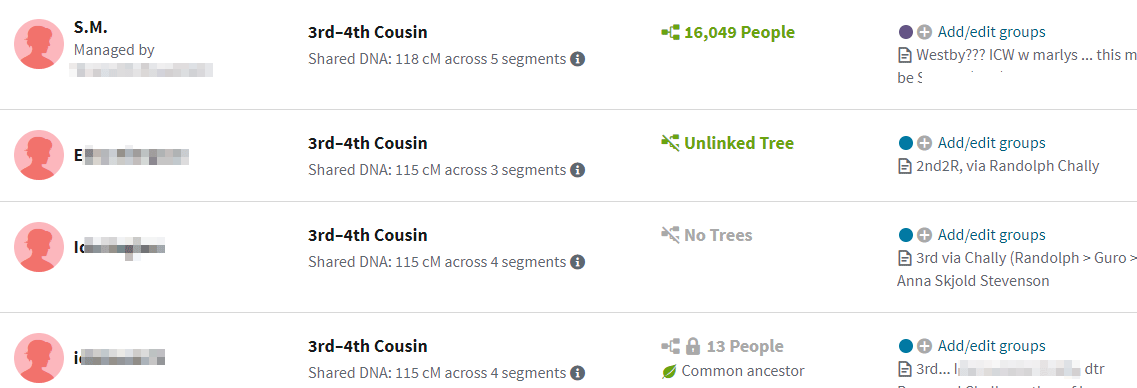How much DNA do we share with fish?

Humans and zebrafish share 70 percent of the same genes and 84 percent of human genes that are known to be associated with human disease have a counterpart in zebrafish. To see also : How similar are humans to bananas?. Large organs and tissues are also common.
How are humans related to fish? The way this happens really makes sense when you realize that, even though it sounds strange, we are actually descended from fish. The early human embryo is very similar to the embryo of any other mammal, bird or amphibian – all of which evolved from fish.
How much DNA do we share with a mouse?
Mice and humans share approximately 70 percent of the same protein-coding gene sequences, which are only 1. To see also : Do humans share DNA with monkeys?.5 percent of these genomes.
How much of our DNA do we share with rats?
According to Brent, results from the study show that the change from the last common ancestor to rodents and humans has occurred much faster along the rodent branch than change along the human branch. The study also finds that about a quarter of the human genome is shared with both rats and mice.
How much DNA is in a mouse?
Mice and males share about 97.5 percent of their functioning DNA, only one percent less than chimpanzees and humans. The new estimate is based on the comparison of mouse chromosome 16 with human DNA. Previous estimates had suggested differences between mice and humans as high as 15 percent.
How much DNA do we share with rats?
The study also finds that about a quarter of the human genome is shared with both rats and mice. To see also : What do humans share the most DNA with?. There are about 700 megabases of DNA shared by all three animals.
How similar is our DNA to rats?
On average, the protein-coding regions of the mouse and human genomes are 85 percent identical; some genes are 99 percent identical while others are only 60 percent identical.
What percentage of genes do humans share with rats?
Researchers say that mice and humans are descended from a common ancestor the size of a small rat.
What animal do we share the most DNA with?
Although the numbers vary from study to study, it is currently generally accepted that chimpanzees (Pan troglodytes) and their close relatives the bonobos (Pan paniscus) are both humans’ closest living relatives, with each species sharing around 98.7% of our DNA.
What animals do we share our DNA with?
The chimpanzee and the bonobo are humans’ closest living relatives. These three species look alike in many ways, both in body and behavior.
What animal has the most DNA?
Researchers have discovered that the animal with the most genes – about 31,000 – is the almost microscopic freshwater crustacean Daphnia pulex, or water flea. By comparison, humans have around 23,000 genes. The daphnia is the first crustacean to have its genome sequenced.
Do we share 90% of our DNA with mice?
“About 99 percent of the genes in humans have counterparts in the mouse,” said Eric Lander, director of the Whitehead Institute Center for Genomic Research in Cambridge, Massachusetts. “Eighty percent have identical, one-to-one counterparties.” The mouse is the only mammal, after humans, whose genome is sequenced.
How much DNA do humans and mice share? When it comes to genes that encode protein, mice are 85 percent similar to humans. For non-coding genes, it is only around 50 percent. The National Human Genome Research Institute attributes this resemblance to a shared ancestor about 80 million years ago.
Do humans and mice share the same number of chromosomes?
Humans have 23 pairs of chromosomes, while rats have 21 and mice have 20. However, the new analysis found that chromosomes from all three organisms were related to each other with around 280 large regions of sequence similarity – called “synthetic blocks” – distributed in varying patterns across of the chromosomes of organisms.
Do humans and mice share the same number of genes?
Overall, mice and humans share virtually the same set of genes. Almost every gene found in one species so far has been found in a closely related form in the other. Of the approximately 4,000 genes studied, less than 10 have been found in one species, but not in the other.
How similar are mice and humans?
Mice and humans share approximately 70 percent of the same protein-coding gene sequences, which are only 1.5 percent of these genomes.
Why do we share so much DNA with mice?
Humans and mice do not look alike, but both species are mammals and are biologically very similar. Almost all the genes in mice share functions with the genes in humans. This means that we develop in the same way from eggs and sperm, and have the same type of organs (heart, brain, lungs, kidneys, etc.)
Why are mice used in genetics?
The mouse has many similarities with humans in terms of anatomy, physiology and genetics. The mouse genome is very similar to our own, which makes the mouse’s genetic research particularly useful for the study of human diseases. Mice are cost effective because they are inexpensive and easy to care for. Adult mice reproduce rapidly.
Do humans have more DNA than mice?
Mice and males share about 97.5 percent of their functioning DNA, only one percent less than chimpanzees and humans. The new estimate is based on the comparison of mouse chromosome 16 with human DNA. Previous estimates had suggested differences between mice and humans as high as 15 percent.
What animals have more DNA than humans?
Researchers have discovered that the animal with the most genes – about 31,000 – is the almost microscopic freshwater crustacean Daphnia pulex, or water flea. By comparison, humans have around 23,000 genes. The daphnia is the first crustacean to have its genome sequenced.
How much DNA do humans share with snakes?
The proportion of repeating elements (the most common form of “garbage DNA”) in snake genomes is about the same as in humans (~ 60%).
Do we share 70% of our DNA with snails? 2. We share 96% of our DNA with primates such as chimpanzees, gorillas and orangutans. But we are also genetically related to bananas â € “with which we share 50% of our DNA â €“ and snails â € “with which we share 70% of our DNA.
What animal do humans share the most DNA with?
Although the numbers vary from study to study, it is currently generally accepted that chimpanzees (Pan troglodytes) and their close relatives the bonobos (Pan paniscus) are both humans’ closest living relatives, with each species sharing around 98.7% of our DNA.
Which animal is genetically closest to humans?
The chimpanzee and the bonobo are humans’ closest living relatives. These three species look alike in many ways, both in body and behavior. But for a clear understanding of how closely they are related, scientists compare their DNA, an essential molecule that is the guide to building each species.
What animal do we share 70% of our DNA with?
It’s probably not so surprising to hear that humans share 98% of our DNA with chimpanzees, but amazingly, we also share 70% with snails and 50% with bananas.
What animal do humans share 70% of their DNA with?
It’s probably not so surprising to hear that humans share 98% of our DNA with chimpanzees, but amazingly, we also share 70% with snails and 50% with bananas.
Which animal is 75% similar to human genetically?
Perhaps not surprisingly, chimpanzees are one of our closest genetic relatives in the animal kingdom. Because of our similarities, chimpanzees have a similar immune system to humans, which means they are susceptible to viruses such as AIDS and hepatitis.
Do humans share 70% DNA with slugs?
We share 96% of our DNA with primates such as chimpanzees, gorillas and orangutans. But we are also genetically related to bananas â € “with which we share 50% of our DNA â €“ and snails â € “with which we share 70% of our DNA.
Are humans related to snakes?
Researchers have found the link between mammalian hair, bird feathers and reptile shells, which they say solves the decades-long scientific debate about how these skin fittings evolved.
How are humans and snakes similar?
The circulatory system of humans and snakes includes both red blood cells, white blood cells, hearts, veins and arteries. Snakes and human hearts also pump blood in the same circulation pattern. Also, snakes are cold-blooded and humans are warm-blooded.
Are humans related to reptiles?
Researchers have uncovered the link between mammalian hair, bird feathers and reptile shells. And the discovery, published today in the journal Science Advances, suggests that all of these animals, including humans, were descended from a single reptile ancestor about 320 million years ago.
What do humans share their DNA with?

It confirms that our closest living biological relatives are chimpanzees and bonobos, with whom we share many traits. But we did not evolve directly from any primates living today. DNA also shows that our species and chimpanzees diverged from a common ancestor species that lived between 8 and 6 million years ago.
Who else do people share DNA with and how much? Humans share DNA with thousands of living things, from bananas to worms to yeast. This is because all plants, animals and fungi evolved from a common ancestor more than 1.5 billion years ago. So, humans share 24% of their genes with grapes, 24% with rice, 38% with roundworms and 44% with honeybees.
Do humans share DNA with a banana?
Even bananas surprisingly still share about 60% of the same DNA as humans!
Do bananas actually share DNA with humans?
Humans and bananas share about 40 to 60 percent of the same DNA. This does not mean that humans are bananas or vice versa, but it does mean that there are similarities. This discovery of shared DNA occurred at the National Human Genome Research Institute in 2013.
Why do we share 50% DNA with bananas?
The figure of 50 percent for humans and bananas means that about half of our genes have counterparts in bananas. For example, we both have a kind of gene that encodes cell growth, although these do not necessarily consist of the same DNA sequences.
What weird things do humans share DNA with?
We share 96% of our DNA with primates such as chimpanzees, gorillas and orangutans. But we are also genetically related to bananas â € “with which we share 50% of our DNA â €“ and snails â € “with which we share 70% of our DNA.
Do humans share DNA with all living things?
Every living organism on the planet has DNA. This is a self-replicating material that transfers information from one organism to the next. Our body is made up of millions of genetic building blocks, otherwise known as base pairs, that make up our physical anatomy.
What thing do humans share the most DNA?
Chimpanzees are the closest living relatives of humans and share almost 99 percent of our DNA. Attempts to identify the areas of the human genome that have changed the most since chimpanzees and humans diverged from a common ancestor have helped to find the DNA sequences that make us human.
What do we share our DNA with the most?

But for a clear understanding of how closely they are related, scientists compare their DNA, an essential molecule that is the guide to building each species. Humans and chimpanzees share a surprising 98.8 percent of their DNA.
What do we share 97% of our DNA with? Maybe it’s because orangutans and humans share 97 percent of their DNA sequence, according to an analysis of the great apes’ genome published today by an international group of researchers.
What shares 90% of DNA with humans?
A 2005 study found that chimpanzees – our closest living evolutionary relatives – are 96 percent genetically similar to humans. Cats are more like us than you think. A 2007 study found that about 90 percent of the genes in the Abyssinian domestic cat are similar to humans.
What shares the most DNA with a human?
Although the numbers vary from study to study, it is currently generally accepted that chimpanzees (Pan troglodytes) and their close relatives the bonobos (Pan paniscus) are both humans’ closest living relatives, with each species sharing around 98.7% of our DNA.
What DNA share is closest to humans?
The chimpanzee and the bonobo are humans’ closest living relatives. These three species look alike in many ways, both in body and behavior.
Sources :
